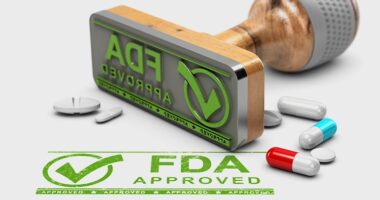Fine Chemicals Outlook and Expansions
Small molecules are the dominant modality for active pharmaceutical ingredients (APIs), an important measure for fine-chemical producers. So what is the outlook for the near and long term? DCAT Value Chain Insights examines the market.
Small-molecules drive the fine-chemicals market. Several fine chemical producers are expanding capabilities in chemical API and fine-chemicals production. DCAT Value Chain Insights rounds up the latest developments.
Small molecules versus biologics
Although the share of small molecules and biologics is more evenly divided in early-stage development, small molecules dominate late-stage development. Table I outlines the distribution of the industry’s pipeline in small molecules and biologics.
| Table I: Industry Pipeline: Small Molecules Versus Biologics | ||
| Preclinical | Small molecules: 689 (52%) |
Biologics: 645 (48%) |
| Phase I | Small molecules: 525 (55%) |
Biologics: 426 (45%) |
| Phase II | Small molecules: 731 (56%) |
Biologics: 584 (44%) |
| Phase III | Small molecules: 300 (61%) |
Biologics: 192 (39%) |
| Pre-registration/registration | Small molecules: 134 (65%) |
Biologics: 72 (35%) |
| Source: IMS Lifecycle R&D Focus (December 2015) | ||
Small molecules also still dominate in recent approvals of new molecular entities (NMEs) by the US Food and Drug Administration’s (FDA) Center for Drug Evaluation and Research (CDER) although the number of biologics approvals is increasing (see Table II). Last year (2015) was a banner year for approval of NMEs with 45 NMEs approved by FDA’s CDER. Of the 45 NMEs approved, 32 were small molecules (new drug applications (NDAs)), one was an insulin analogue approved as a NDA, and 12 were biologics (biologics license applications (BLAs).
The FDA’s CDER approved 41 NMEs in 2014, 30 NDAs (i.e., small molecules) and 11 BLAs (i.e., biologics), an uptick from 2013 and on par with 2012. FDA’s CDER approved 27 NMEs in 2013 and 39 NMEs in 2012. From 2005 to 2013, CDER averaged 25 NME approvals per year, which was bolstered by approval levels in 2004 (36 NMEs approved), 2011 (30 NMEs approved), 2012 (39 NMEs approved), and 2013 (27 NMEs approved). The period of 2005 to 2010 was a slower period for NME approvals. In 2005, 20 NMEs were approved, 22 in 2006, 18 in 2007, 24 in 2008, 26 in 2009, and 21 in 2010. Table II summarizes NME approvals for small molecules and biologics from 2010 to 2015.
| Table II: Small Molecule and Biologics New Molecular Entities Approved by the US Food and Drug Administration’s Center for Drug Evaluation and Research, 2010 to 2015. | ||
| Year | Number of New Molecular Entities (NMEs) Approved | Number of NME NDAs approved (small molecules) and NME BLAs approved (biologics) |
| 2010 | 21 NMEs approved | 15 NDAs (small molecules) and 6 BLAs (biologics) |
| 2011 | 30 NMEs approved | 24 NDAs (small molecules) and 6 BLAs (biologics) |
| 2012 | 39 NMEs approved | 33 NDAs (small molecules) and 6 BLAs (biologics) |
| 2013 | 27 NMEs approved | 24 NDAs (small molecules) and 3 BLAs (biologics) |
| 2014 | 41 NMEs approved | 30 NDAs (small molecules) and 11 BLAs (biologics) |
| 2015 | 45 NMEs approved | 33 NDAs (32 small molecules and one insulin analog*), 12 BLAs (biologics) |
| Note: Novo Nordisk’s Tresiba (insulin degludec injection) is a long-acting basal human insulin analog produced by a process that includes expression of recombinant DNA in Saccharomyces cerevisiae followed by chemical modification. It was approved as a new drug application not as a biologics license application. Source: US Food and Drug Administration’s Center for Drug Evaluation and Research | ||
A roundup of recent activity
Several contract manufacturing organizations and fine-chemical producers have announced or completed expansions to build their small-molecule production capabilities or have made acquisitions A roundup of activity thus far in 2016 (October 2016) is highlighted below.
Alcami. Alcami, a custom development and manufacturing services firm, plans to expand its API manufacturing at its facility in Germantown, Wisconsin for highly potent APIs (HPAPIs). Alcami plans to invest in 2016 and 2017 toward enhancement of new and existing kilo labs to introduce the development and manufacturing of HPAPIs. Two new cGMP-compliant HPAPI production suites will focus on primary containment technologies with engineering controls designed to meet occupational exposure limits (OELs) of minimally 0.03 μg/cubic meter (SafeBridge Category 3). The expansion will include a 5,000-square-foot renovation that will be operational by the first quarter of 2017.The newly designed space will include up to 150-liter reactor scale-up with cryogenic capabilities. These advancements follow operational and technology enhancements across development, clinical, and commercial manufacturing to increase production capacity by 50%. The company has global API operations in Germantown, and Weert, The Netherlands.
Ampac Fine Chemicals. Ampac Fine Chemicals (AFC) reported earlier this year on recent expansions at its facilities in Rancho Cordova, California and La Porte, Texas that contributed to increasing total capacities by 50% since 2013. AFC reports that its most recent high-potency facility is fully operational, and the company has started construction of a large-scale facility that will come on line in late 2016. Overall, the company is investing over $40 million in 2016 for capacity expansions and infrastructure enhancements.
AMRI. In July 2016, AMRI completed its previously announced EUR 315 million ($349 million) acquisition of Prime European Therapeuticals S.p.A., also known as Euticals, a privately held company headquartered in Lodi, Italy, specializing in custom synthesis and the manufacture of APIs. This transaction was initially announced in May 2016. At the time of the announced acquisition, AMRI outlined the key strategic benefits of the deal: (1) it significantly expands AMRI’s capabilities in custom and complex APIs; (2) it provides AMRI with an established European custom synthesis presence; (3) it expands AMRI’s expertise in multiple areas: sterile APIs, steroids, generics, fermentation, controlled substances, and mono-bactams; and (4) it provides AMRI an API portfolio that includes 50 active US drug master files (DMFs), 17 EU certificates of suitability (COS) or compliance with the European Pharmacopeia (CEP), 13 Japanese DMFs, and six South Korean DMFs, with several APIs having filings in more than one of these areas and over two dozen other international filings. The move also provides AMRI with global scale and a diverse customer and revenue base. With 75% of revenue outside North America, Euticals opens up new markets for AMRI; more than half of AMRI’s combined proforma revenue is expected to be ex-US. Euticals also brings additional portfolio diversification in generics.
Cambrex. Cambrex has made several investments to strengthen its small-molecule manufacturing capabilities with several recent expansions and a key acquisition. In July 2016, the company announced that it had completed and validated a $50-million production and warehousing expansion for API manufacturing at its cGMP site in Charles City, Iowa. Cambrex’s Charles City, Iowa facility sits on a 45-acre site and manufactures a range of APIs and pharmaceutical intermediates, including highly potent molecules and controlled substances.
The company later reported that it plans to invest SEK 72 million ($9 million) to expand large-scale manufacturing capacity for APIs at its facility in Karlskoga, Sweden.The investment includes the installation of new multi-purpose reactors ranging from 4 cubic meters to 12 cubic meters and upgrading of a control room within an existing plant on site. The new facilities will undergo validation and cGMP qualification ahead of the operational startup in the fourth quarter of 2016. This extra capacity increases the large-scale manufacturing capabilities of the Karlskoga facility, which supports projects from R&D through to large-scale commercial manufacturing.
Cambrex also announced in October 2016 that it had opened its API pilot plant in Milan, Italy, following validation and ISO certification. The cGMP plant, which can produce batch sizes from 1 kilogram to 15 kilograms, was constructed to meet demand for small-scale API volumes and for API supply to niche markets. The new facility will also provide custom manufacturing of new chemical entities and intermediates for early-stage drug development and clinical trials.
The new facility is equipped with a hydrogenator that can operate at 30 bar and two separate lines of 150-liter glass-lined and stainless steel reactors. ISO 8 classified, the plant is also equipped with a static dryer, milling, and micronization capabilities. Cambrex plans a further upgrade of the pilot plant in 2017 to support production of Class 3/4 high-potency products.
These expansions are in addition to a recent acquisition by Cambrex. In September 2016, Cambrex announced that it was acquiring PharmaCore, a High Point, North Carolina-based company specializing in developing and manufacturing small-molecule APIs, for approximately $25 million. PharmaCore develops and produces APIs and intermediates in batch sizes from milligrams to 100 kilograms to support clinical trials from Phase I to Phase III. The company is licensed with the US Drug Enforcement Administration (DEA) to manufacture Schedule II to Schedule V controlled substances.The acquisition enhances Cambrex’s portfolio of small-molecule API services and complements its existing large-scale, multi-purpose manufacturing facilities in the US and Europe. PharmaCore’s North Carolina facility has a 15,000-square-foot chemistry laboratory and a 13,000-square-foot pilot plant, with reactor capacity ranging from 20 liters to 2,000 liters, with supporting GMP analytical services.
Hovione. Earlier this year, Hovione broke ground for the expansion of its facility in East Windsor, New Jersey. The expansion will add an additional 30,600 square feet to the existing 24,000-square-foot facility. It will introduce a new commercial spray-dryer unit to complement the existing pilot unit, and this installation will be specifically designed to handle potent drug substances. In addition, the New Jersey facility will more than double its capacity to manufacture drug substances.The expansion is expected to add approximately 60 new jobs to the current workforce over the next three years. The startup of the operation is expected to take place in April 2017 for the drug substance and spray-drying services while the continuous drug product manufacturing is planned for the end of 2017. Earlier this year, Hovione announced that it plans to host and operate a commercial-scale continuous manufacturing facility (drug product) as part of an agreement with Vertex Pharmaceutical with the facility housed at Hovione’s New Jersey facility.
Johnson Matthey. In September 2016, Johnson Matthey, a provider of pharmaceutical services, APIs, and catalyst technologies, received GMP approval for its facilities in Annan, UK. The company made investments to refurbish the site, which is now fully equipped for GMP manufacturing. The certification follows a successful inspection by the UK Medicines and Healthcare products Regulatory Agency, with no critical or major observations and is ready for production. Johnson Matthey Fine Chemicals is recruiting for 35 new vacancies at the Annan site across a variety of manufacturing and operational positions. Johnson Matthey acquired the Annan facility in November 2014 to expand its fine chemicals division’s large-volume capacity.
Earlier this year, the company completed an expansion of its Cambridge, UK facilities, bringing additional process research and development services and kilo-scale manufacture to the site. This investment supports the use of Johnson Matthey’s catalyst and biocatalyst technology in process R&D and non-GMP production of materials for preclinical pharmaceutical and toxicology studies.
Novasep. Earlier this year, Novasep, a supplier of services and technologies for the life sciences industry, finalized the set-up of its new synthesis laboratory and kilo lab at its US facility. The US facility in Boothwyn, Pennsylvania is equipped with jacketed reactors ranging from 100 mL to 50 L in size and with a 35-L filter dryer for isolation of kilogram quantities of compound. The laboratory extension features all the necessary equipment for standard and cryogenic chemistry.
Olon SpA. Earlier this year, Olon SpA, a manufacturer of APIs and a subsidiary of the Milan, Italy-based P&R Group, a chemical/pharmaceutical company, acquired INFA Group, an API and fine chemicals manufacturer headquartered in Milan, Italy. Olon has five manufacturing sites in northern Italy (Rodano, Settimo Torinese, Garbagnate Milanese, Mulazzano and Dorno) with more than 800 employees. INFA Group, with more than 400 employees, has two manufacturing sites in Italy (Labochim and Sifavitor) and one in Spain (Derivados Químicos). The move further strengthens Olon’s position in providing generic APIs by more than doubling Olon’s generic drug portfolio to more than 200 products and also further strengthens its position in contract development and manufacturing services. A combined Olon and INFA will have about 130 active US drug master files and more than 50 European Union certificates of suitability or compliance with the European Pharmacopoeia as well as eight manufacturing facilities self-identified under the Generic Drug User Fee Amendments Act, according to the companies.
Onyx Scientific. Onyx Scientific, a contract research organization and small-scale API manufacturer, is investing in an additional site located adjacent to its existing facility in northeastern England. The additional space will primarily be used to increase its laboratory facilities and GMP suites and allocate space for storage of GMP materials.
Piramal. Earlier this year, Piramal Enterprises Limited through its wholly owned subsidiary in the US, acquired Ash Stevens, a Riverview, Michigan-based contract development and manufacturing organization for APIs, in an all cash deal for a consideration of $42.95 million plus an earn-out consideration capped at $10 million. With the acquisition, Piramal gained 60,000 square feet of facilities, eight chemical drug development and production laboratories, and six full-scale production areas. Ash Stevens’ facility in Michigan has engineering and containment controls for the safe handling and cGMP manufacture of small- and large-scale high-potency APIs, with occupational exposure limits ≤ 0.1µg/cubic meters. The facility has approvals from the US, European Union, Australian, Japanese, Korean, and Mexican regulatory agencies.
PCI Synthesis. PCI Synthesis, a Newburyport, Massachusetts-based CMOs of APIs, reported in September 2016 that it had received registration and certification from the US Drug Enforcement Administration (DEA) to handle Schedule II, III, IV, and V controlled substances. With DEA registration, the company will be able to work on projects that are considered controlled substances or the raw materials that are used to produce them. In preparation for these new substances, the company has invested in new systems, processes, and training so that it can manufacture controlled substances in its Newburyport facility. It also conducted an audit by a third party to ensure PCI Synthesis is in compliance required to earn and maintain its DEA registration.
Siegfried. Earlier this year, the Chinese Environmental Protection Bureau issued Siegfried Group the final operating approval for its API production site in Nantong, China, thereby providing the company all approvals and certificates required by the authorities for large-scale production. Trial operation for the commercial facilities had started a year ago. Siegfried’s Nantong production site is located in an industrial park northwest of Shanghai. The site’s production capacity amounts to 350 cubic meters and provides work for about 200 employees. The facility was inaugurated in August 2015. The pilot plants have been producing for 18 months, and initial orders for large-scale production have been received. In addition, products will be transferred from other locations to Nantong. The Nantong site is one of several recent expansions for Siegfried. In 2015 it acquired BASF’s pharmaceutical supply business and the corresponding three sites in Evionnaz, Switzerland, Saint-Vulbas, France, and Minden, Germany. The three sites with more than 800 employees reported total sales for 2014 of approximately CHF 280 million ($316 million). That acquisition represents the final step in Siegfried’s targeted acquisition policy implemented over the past several years. Siegfried previously acquired California-based AMP and Hameln Pharma in Hameln, Germany.
WuXi AppTec. WuXi AppTec, a contract development, manufacturing, and testing services provider, reports that its small-molecule process development and manufacturing subsidiary, Shanghai SynTheAll Pharmaceutical Co., Ltd. (STA), is opening operations in San Diego, California. STA provides process R&D and API manufacturing services for early-phase clinical studies. WuXi also has US facilities in: Cambridge, Massachusetts, Plainsboro, New Jersey; Philadelphia and Lansdale, Pennsylvania; St. Paul, Minnesota; and Atlanta, Georgia. It also has a global presence in Germany, Iceland, Israel, South Korea, and Japan and is headquartered in Shanghai.







